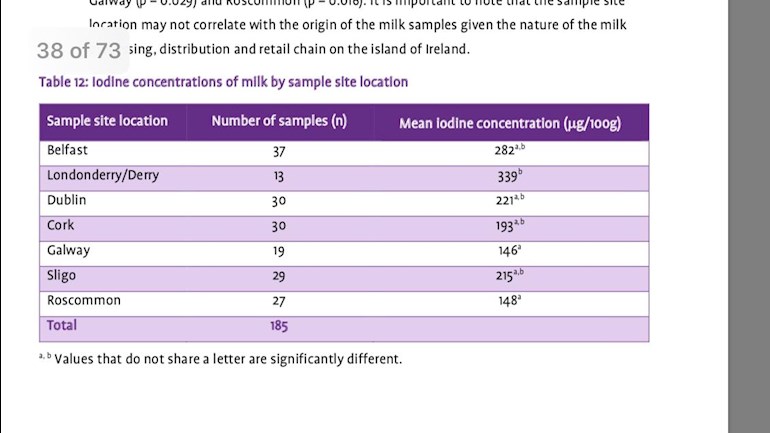Came across this study published March 2018, on iodine levels in Irish schoolgirls, with new research suggesting this population is sufficient.
Iodine content within milk was studied and appears to be very high? Can this be correct?

Came across this study published March 2018, on iodine levels in Irish schoolgirls, with new research suggesting this population is sufficient.
Iodine content within milk was studied and appears to be very high? Can this be correct?
I have no knowledge of it being higher in NI, but I always thought the iodine content was, in part, down to cleaning the cows' teats with teat dip/udder wash containing iodine.
If a cow is grass fed it appears there's not enough iodine for a cow's needs so it's supplemented. I suppose forage has to have a certain level of iodine and maybe it's tested.
This is interesting
independent.ie/business/far...
It used to be said that organic milk had a lower iodine content than non-oganic milk, but I recently read that this is no longer the case.
Teat disinfectant was undoubtedly a significant contributor to iodine levels in milk.
I know that there has been quite some move towards chlorine-based disinfectants. When I asked about goat milk, the farm replied that chlorine-based is gentler on the teats.
I've read that the iodine content in milk varies with the seasons. When the cows are out in the field eating fresh grass it is lower, when they are inside for the winter their feed is supplemented with vitamins and minerals, the iodine content of the milk then goes up.
Milking is all automated now. We used a bucket of soapy water with some soda crystals and washing powder and a cloth, but then we milked by hand. I never knew that they used iodine in the washing of teats before milking these days.